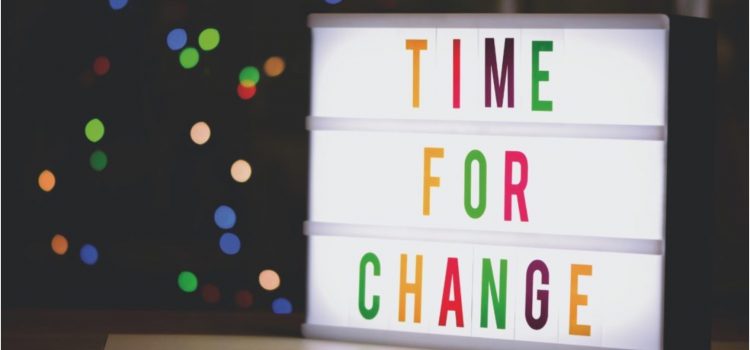

This article is an excerpt from the Shortform book guide to "Untamed" by Glennon Doyle. Shortform has the world's best summaries and analyses of books you should be reading.
Like this article? Sign up for a free trial here .
How can you start standing up for your beliefs? What does it mean to really embrace anti-racism?
Self-help author Glennon Doyle reexamined her beliefs about race and realized that she had been participating in cultural practices and belief systems that did not reflect what she believed true about herself and the world. Deconstructing old beliefs and practices inherited from your culture gives you a clean slate upon which to stand up for your beliefs, current values, and goals.
Read on to learn about deconstructing racist beliefs and why standing up for your beliefs means getting involved.
Deconstructing Racist Beliefs
After the election of Donald Trump in 2016 and the demonstrations that followed, Doyle was inspired to talk about the Civil Rights Movement of the 1960s with her family. Her younger daughter asked if their family would have joined in the marches and demonstrations for civil rights if they had been alive in the 60s. Before Doyle could answer, her older daughter responded that they wouldn’t have—because they weren’t participating in the civil rights demonstrations occurring in the present day.
Doyle realized her daughter was right. Although she believed deeply in the cause of civil rights, she was not personally taking any concrete action, such as demonstrating for change or speaking out in solidarity with those fighting for racial justice. It wasn’t enough to profess support for racial equality; she had to become personally involved.
| Stand Up for Your Beliefs: Avoid “Slacktivism” and Take Real-World Action Although there are many similarities between the Civil Rights Movement of the ‘60s and the civil rights demonstrations of today, the influence of social media is one major difference. The new ability to passively participate in social causes online can sometimes lead to what some call “slacktivism”—expressing interest or support (liking a page, sharing, retweeting information) without taking on much personal risk. Doyle and her daughters may have thought they were actively supporting civil rights because it is easy to passively engage with causes online and express support without publicly demonstrating. However, they realized that professing your support isn’t enough because truly standing up for your beliefs comes from connecting with others and taking action. One way to make the leap from engaging online to engaging offline is to meet in person with others who support the cause you’re interested in. Meeting with other activists helps you establish personal, real-world connections that can encourage you to take concrete, meaningful action. |
Stand Up for Your Beliefs by Taking Action
Doyle believed that the first step to becoming more meaningfully involved in this cause was to educate herself about racism and explore her relationship with it. She learned about police brutality, the preschool-to-prison pipeline, and other issues the African American community faces. She began to see racism as a deep-rooted issue that poisons American society on all levels. (Shortform note: Doyle doesn’t mention which books or authors she read as she was becoming educated about these issues. To learn more about standing up for your beliefs, there are many reading lists online, such as this one put together by Ibram X. Kendi, anti-racism expert and author of How to Be an Anti-Racist.)
Doyle realized that racism had surrounded her throughout her life. As a child, she watched police shows that depicted African Americans as criminals and heard racist jokes and comments—yet she never saw this as “wrong” and didn’t speak up. After educating herself, she realized that these racist jokes and negative depictions of African Americans in the media were expressions of American racism, unacknowledged by white people and yet pervasive.
(Shortform note: Doyle may not have recognized what she saw as racism because what she saw didn’t fit her idea of “real” racism. In How to Be an Anti-Racist, Ibram X. Kendi explains that there are two kinds of racism: overt and covert. Overt racism involves acts of aggression or violence between individuals—likely what Doyle was raised to believe was “real” racism. She didn’t realize at the time that covert racism is “real” racism too. Covert racism involves institutionalized racist policies and practices throughout society. Doyle’s experience watching police shows exemplifies how covert racism can be communicated and normalized through the media—so that many can’t even see racism even when it’s right in front of them.)
As she became aware of the pervasiveness of racism, Doyle felt inspired to lead discussions and raise awareness about the issue. She was criticized and called racist for assuming she had a right to take a leadership role in the movement, however. Some felt it was important for white women to take a step back and let people of color who were already leading the movement take center stage.
She realized that when others called her racist, they were right—her assumption of a leadership role represented racist beliefs inside of her. But she still believed it was important to be brave and show up to conversations about race—even though her prejudices would be on display. When standing up for what you believe and becoming involved, Doyle believes speaking out on the issues is better than staying silent and complicit in the racial status quo.
| Consciously Avoiding White Defensiveness Doyle willingly admits to the racism within her so that she can participate in productive discussions. Doyle isn’t defensive or over-sensitive as she comes to this conclusion—an unusual reaction, according to Robin DiAngelo (White Fragility). DiAngelo claims that it is more common for white people to become highly defensive when confronted with their racism. This is an unfortunate reaction—white defensiveness in conversations about race can effectively shut down communication, and it wrongly refocuses everyone’s attention on the defensive white person rather than the needs of the African American community. To combat this tendency towards defensiveness, DiAngelo says, white people should not view the accusation of racism as a personal, moral failing but rather as a result of their ongoing complicity in the racial status quo. Realizing society’s role in creating racist beliefs can clarify that racism is not so much a personal accusation as a social responsibility that needs collective attention. DiAngelo also agrees with Doyle that it is better to be criticized than to be silent. He emphasizes that white people should acknowledge their complicity while still being open to discussion. In practical terms, this looks like white people staying out of leadership roles in conversations about race, instead listening attentively to those who have suffered and developing a better understanding of what is actually needed of them. |

———End of Preview———
Like what you just read? Read the rest of the world's best book summary and analysis of Glennon Doyle's "Untamed" at Shortform .
Here's what you'll find in our full Untamed summary :
- Glennon Doyle's story of freeing herself from society's rules and expectations
- Why you should rebuild your life using emotion, intuition, and imagination
- A look at how young women are taught to repress their emotions and desires






